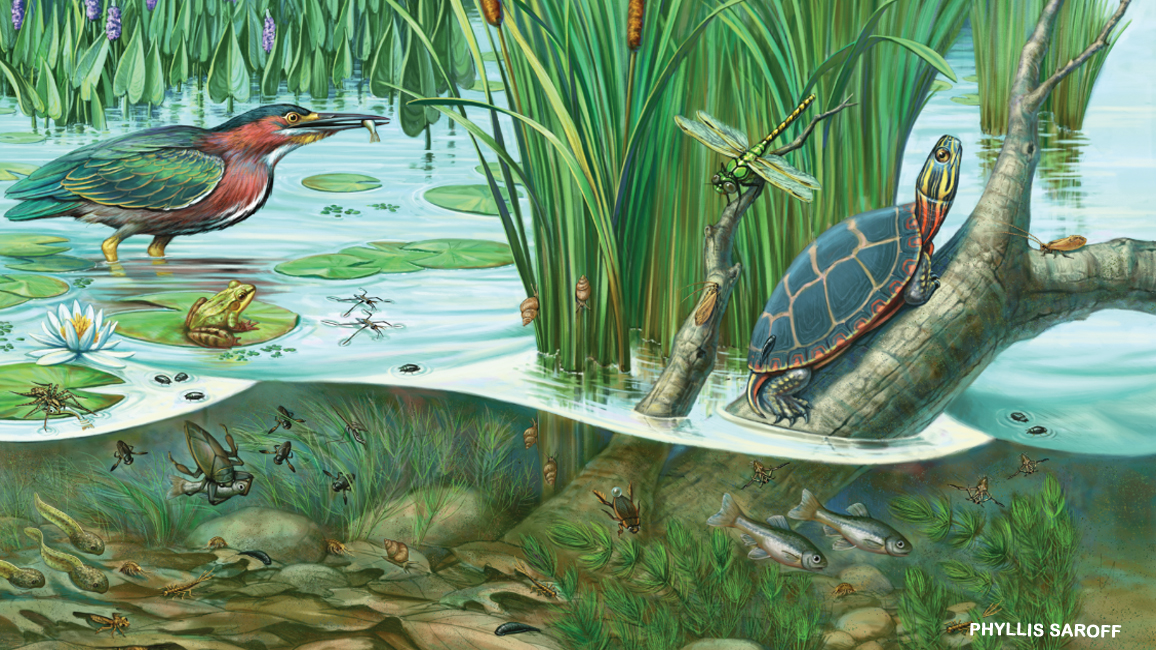
Pond Search
By Ellen Lambeth; art by Phyllis SaroffIf you visit a pond, you might notice a few animals on, around, or above the water. Here, you can see underwater, too! Try to find all these pond critters in the scene.


Put on some old sneakers or rubber boots, grab a pal and your explorer’s kit, and head for the nearest pond.
1. SCOPE IT OUT
Approach slowly so you don’t scare away creatures near the water. How many can you see? What are they doing? Are any flying over the water? Wading? Skittering across the surface? Swimming in the water or moving along the bottom? For a clear underwater view, use a face mask, goggles, or a homemade water scope. Search along plant stems and look under rocks and logs near the water’s edge.
2. SCOOP ’EM UP
Fill the pan and containers with pond water and set them in a shady spot. Next, use your net or strainer to catch small fish, insects, and other tiny creatures. Try these super scooper tips:
• Scoop and skim in different places—at the surface, along the shore, across the bottom. Check for wiggly creatures in the muck as the water runs out.
• Hold the net just under the water’s surface. Have a buddy hold a rock or branch found underwater over the net and gently shake or swish off any clinging creatures into the net.
SAFETY TIPS
• Tell an adult where you’re going.
• Take a buddy along .
• Stay near the water’s edge unless an adult is watching out for you.
• Watch your step! There could be deep spots , slippery rocks, or thick muck.
3. SORT ’EM OUT
Empty whatever you find into the pan or containers. Here’s how to see them better:
Fill an ice-cube tray or plastic egg carton with clear pond water. Next, transfer the creatures from the collecting containers to the tray or carton. An eyedropper or paintbrush works well to gently pick them up, one at a time. Put each kind of creature in a separate section of the tray. Now see if you’ve captured something that:
• has no legs
• has six legs
• has claws
• has a shell
• has a tail
• is red
• is black
• wiggles
• swims sideways
• swims upside down
• stays on the bottom of the tray
• stays at the top of the water
4. LET ’EM GO
Gently lower the containers to the pond water and let the creatures swim or float out on their own. Come back at different times of the year to see what’s new or changed. Make sure to keep the area clean, too. Carry out any trash or litter you find.
Water Explorer’s Kit
• strainer, dip net, or aquarium fish net
• shallow white plastic pan
• small white plastic containers
• white plastic ice-cube tray or
plastic egg carton
• eyedropper
• small paintbrush
• hand lens or magnif ying glass
• nature journal and pencil

















